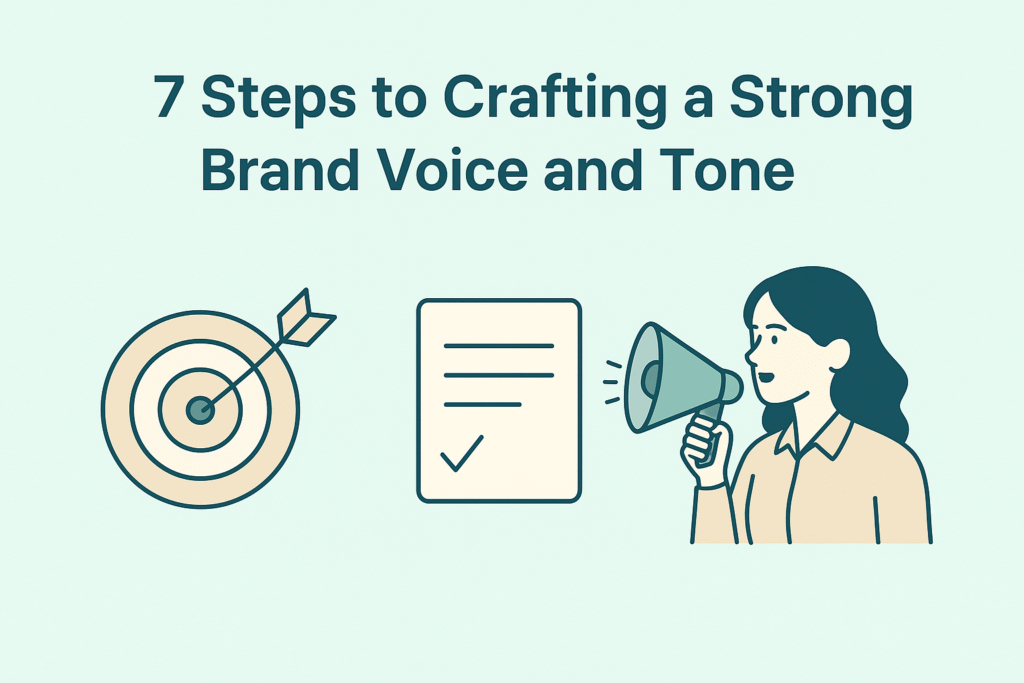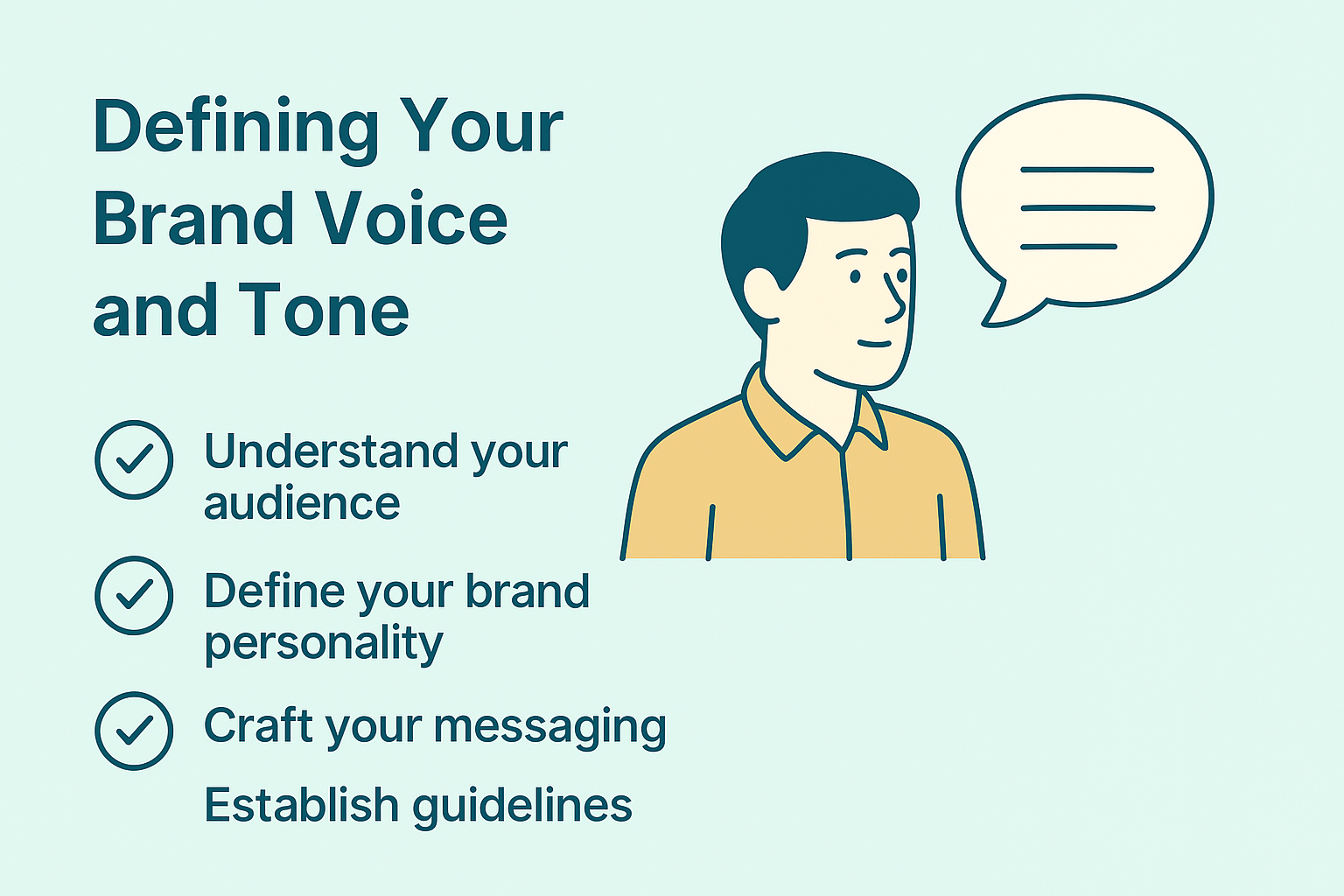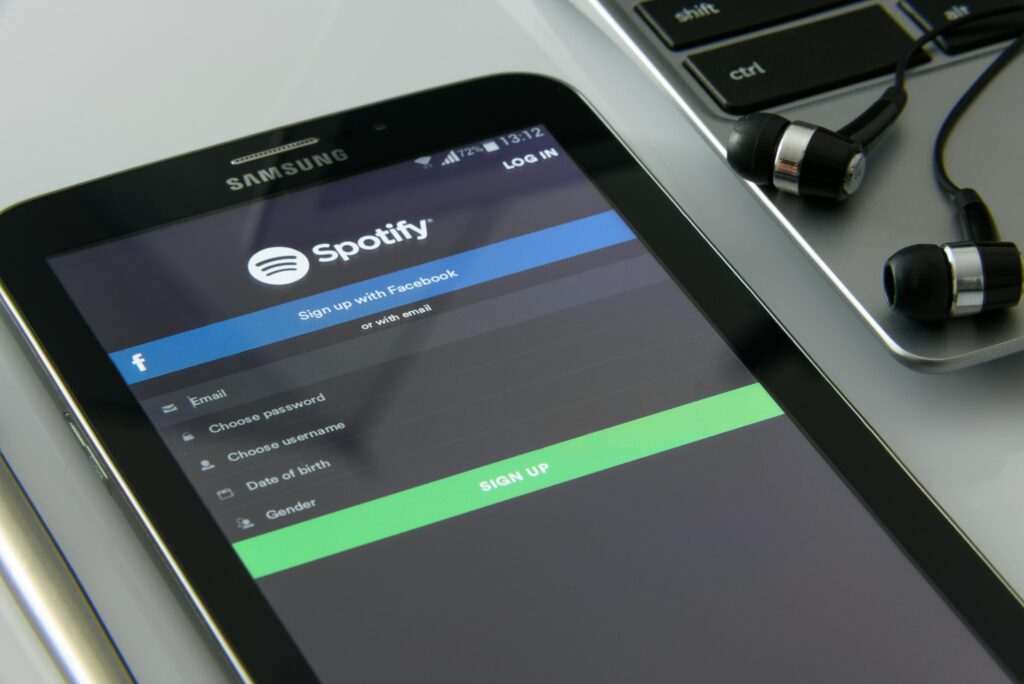Table of Contents
Introduction
Have you ever scrolled through a social media feed, stopped mid-scroll, and instantly recognised a brand from the tone of its caption? That’s the power of a well-defined brand voice. In an era where consumers are bombarded with messages, your brand voice acts as a beacon, cutting through the noise and creating familiarity. Whether you’re a scrappy startup seeking early adopters or an established enterprise aiming to deepen customer loyalty, your brand voice shapes perceptions, builds community, and drives action. But voice alone isn’t enough—you also need the right tone for every situation. Let’s dive into how you can craft, deploy, and refine your brand voice and tone for lasting impact.

Step 1: Define Your Core Brand Values and Mission
Your brand voice must be authentic, and authenticity starts with your core values. Begin by revisiting your mission statement—why you exist beyond profit. Engage key stakeholders in workshops to articulate your guiding principles, ethical commitments, and long-term vision. Translate these abstract values into descriptive phrases that capture the essence of your brand’s purpose. For example, if one of your core values is ‘innovation with impact,’ your voice should convey forward-thinking optimism and social responsibility in every piece of communication. This foundational clarity ensures that every message, from marketing copy to customer support emails, aligns with your brand’s raison d’être and resonates with audiences who share those values.
Step 2: Know Your Target Audience Deeply
A brand voice without audience insight is like a compass without a map. Conduct qualitative and quantitative research—interviews, focus groups, surveys, and analytics—to build multidimensional buyer personas. Understand their communication preferences, pain points, and emotional triggers. For B2B brands, you might need separate personas for decision-makers and end-users. Map out their buyer journeys and note where tone adjustments are crucial—perhaps a more educational tone for awareness-stage blog posts, and a business-formal tone for proposal documents. This rigorous audience profiling ensures your brand voice speaks directly to the hearts and minds of the people who matter most.
Step 3: Audit Your Existing Content
A content audit is a diagnostic process to uncover strengths and inconsistencies. Create a spreadsheet cataloging every piece of content across channels—website pages, social posts, email campaigns, video scripts, and even internal documents. Score each item on voice consistency, readability, and engagement metrics such as time on page or click-through rates. Identify patterns: do your blog posts feel overly technical compared to your social captions? Are your customer service responses too formal for your brand persona? Use this audit to highlight gaps and guide the recalibration of your existing content to match your desired voice, ensuring a cohesive experience across every touchpoint.
Step 4: Choose Your Brand Voice Attributes
Now that you have clarity on values and audience, distil your brand personality into three to five adjectives. These shouldn’t be buzzwords but precise descriptors that differentiate you. For instance, ‘unapologetically curious’ for a tech education platform, or ‘grounded and empathetic’ for a mental health app. For each attribute, provide concrete examples of how it manifests in language—sentence structure, vocabulary, punctuation, even emoji usage. Document these in a ‘Voice Attributes Matrix’ that becomes the referee when writers or content creators debate whether a phrase ‘sounds like us.’
Step 5: Create a Brand Voice Chart
Turn your voice attributes into an operational guide: the Brand Voice Chart. For each attribute, list ‘Do’s’—actions and stylistic choices that embody the trait—and ‘Don’ts’—common mistakes or off-brand tendencies to avoid. For example, under ‘friendly,’ do use contractions and colloquial expressions; don’t overuse slang that could alienate older demographics. Under ‘authoritative,’ do cite credible data and industry reports; don’t come across as aloof or jargon-heavy. This chart is your content governance tool, empowering even new hires to produce on-brand copy without constant oversight.
Step 6: Adapt Your Tone for Different Contexts
While your voice is your brand’s unchanging identity, tone is the emotional seasoning that changes with the context. Create a ‘Tone Spectrum’ illustrating how to calibrate your voice across scenarios: from celebratory (product launches) to supportive (customer inquiries), to urgent (service alerts) to reflective (annual reports). Provide sample sentences for each tone category, demonstrating how the same core message can shift: a holiday promo might be playful and festive, whereas a service disruption notice must be calm, apologetic, and solution-oriented. This preemptive guidance prevents mixed messages and ensures every communication feels both on-brand and appropriate.
Step 7: Train, Test, and Evolve
Deploy your voice and tone guidelines through interactive workshops and digital training modules for all team members—from marketing and sales to customer support and HR. Integrate your guidelines into content management systems and collaboration tools with quick-reference snippets. Launch A/B tests to compare the performance of different tonal approaches, and set up dashboards to monitor engagement metrics, sentiment analysis, and brand health scores. Schedule quarterly reviews to incorporate learnings, update examples, and refresh your guide, ensuring it evolves as your industry, audience, and culture shift.

Real-World Examples of Strong Brand Voice
Netflix:
Uses a casually conversational tone peppered with pop culture references, fostering a sense of community among viewers. Their social media often reads like a chat between friends, strengthening brand affinity.

Spotify:
Balances trendiness with data-driven personalization. Their ‘Wrapped’ campaign exemplifies this—combining playful language with precise user listening data to create shareable social content.

Duolingo:

Leverages humor and whimsical character interactions. The Duolingo owl’s playful reminders on social media showcase how a brand can turn functional notifications into engaging brand moments.
Also read
How to Create a Memorable Brand Logo and Visual Identity:
https://www.delitsmotionpicture.in/create-brand-logo-visual-identity
The Importance of Consistency in Branding:
https://www.delitsmotionpicture.in/importance-of-consistency-in-branding
https://www.hubspot.com/products/content/brand-voice
FAQsQ:
How do I measure the effectiveness of my brand voice?
A: Use a combination of quantitative metrics—engagement rates, time on page, click-throughs—and qualitative feedback from surveys and social listening. Advanced tools like sentiment analysis and brand health monitoring can provide deeper insights into how your voice resonates over time.
Q: How often should I revisit my brand voice guide?
A: Plan a thorough review at least once a year, or whenever you undergo significant brand shifts—such as new product launches, market expansions, or rebranding efforts. Regular check-ins allow you to refine your voice in alignment with evolving customer expectations.
Q: Can small businesses benefit from a formal brand voice guide?
A: Absolutely. Even solopreneurs and small teams gain clarity and consistency by documenting their voice guidelines. This foundational work pays dividends as you scale, ensuring new collaborators and freelancers align quickly.
Q: What role do visuals play in reinforcing brand voice?
A: Visual elements—color palettes, typography, illustration styles—work hand-in-hand with your written voice. Ensure your visual guidelines echo your verbal personality, creating a cohesive brand experience across all media.
https://writer.delitsmotionpicture.com/importance-of-consistency-in-brand/
Final Thoughts
Crafting and maintaining a strong brand voice and tone is an ongoing strategic process. It requires intention, cross-functional collaboration, and a commitment to listen and adapt. By embedding your voice guidelines into every facet of your organization—from onboarding to performance reviews—you transform your brand voice from a static document into a living asset that grows with your audience. Start today: define your core, speak authentically, and watch as your brand voice becomes your most powerful differentiator.
Bonus Step: Involve Your Community
One of the most underrated ways to refine and humanize your brand voice is by involving your community. Encourage user-generated content (UGC), conduct brand voice surveys, or even launch naming or caption contests. Not only does this increase engagement, but it also gives you authentic insights into how your audience speaks, what they care about, and the kind of language they relate to. Brands like LEGO and Starbucks frequently tap into their communities for inspiration and tone calibration. This co-creation strategy fosters deeper loyalty and ensures your voice mirrors the culture you’re aiming to build.
Voice in Crisis Communication
Your brand voice is most tested during a crisis. Whether it’s a product recall, public backlash, or global incident, maintaining a consistent and empathetic tone becomes crucial. During such times, the tone should shift toward humility, transparency, and responsibility. Create pre-approved templates or tone-of-voice scenarios specifically for crisis communications to respond swiftly and appropriately without compromising your brand’s core identity. Airbnb’s empathetic yet direct communication during the COVID-19 pandemic is a prime example of tone done right under pressure.
Voice Across Cultures
If you’re operating globally, your brand voice must be culturally aware. Humor, formality, idioms, and even emojis can mean very different things in different regions. A tone that’s engaging in the U.S. may be considered too informal in Germany or too dry in Brazil. Work with local language experts or cultural consultants to localize—not just translate—your voice. The goal is to retain your brand personality while showing respect and understanding for diverse audiences.
Summary
In today’s hyper-competitive digital landscape, a distinctive brand voice and tone are more than aesthetics—they’re strategic assets that build trust, foster emotional connections, and distinguish your business in crowded markets. This in-depth guide covers seven comprehensive steps to develop a unique, authentic, and consistent brand voice. We’ll explore the nuanced difference between voice and tone, illustrate each step with real-world case studies, and provide actionable frameworks that your team can implement immediately. By following this roadmap, you’ll not only articulate your brand’s core personality but also adapt it seamlessly across different platforms, ensuring every message resonates with your target audience.
